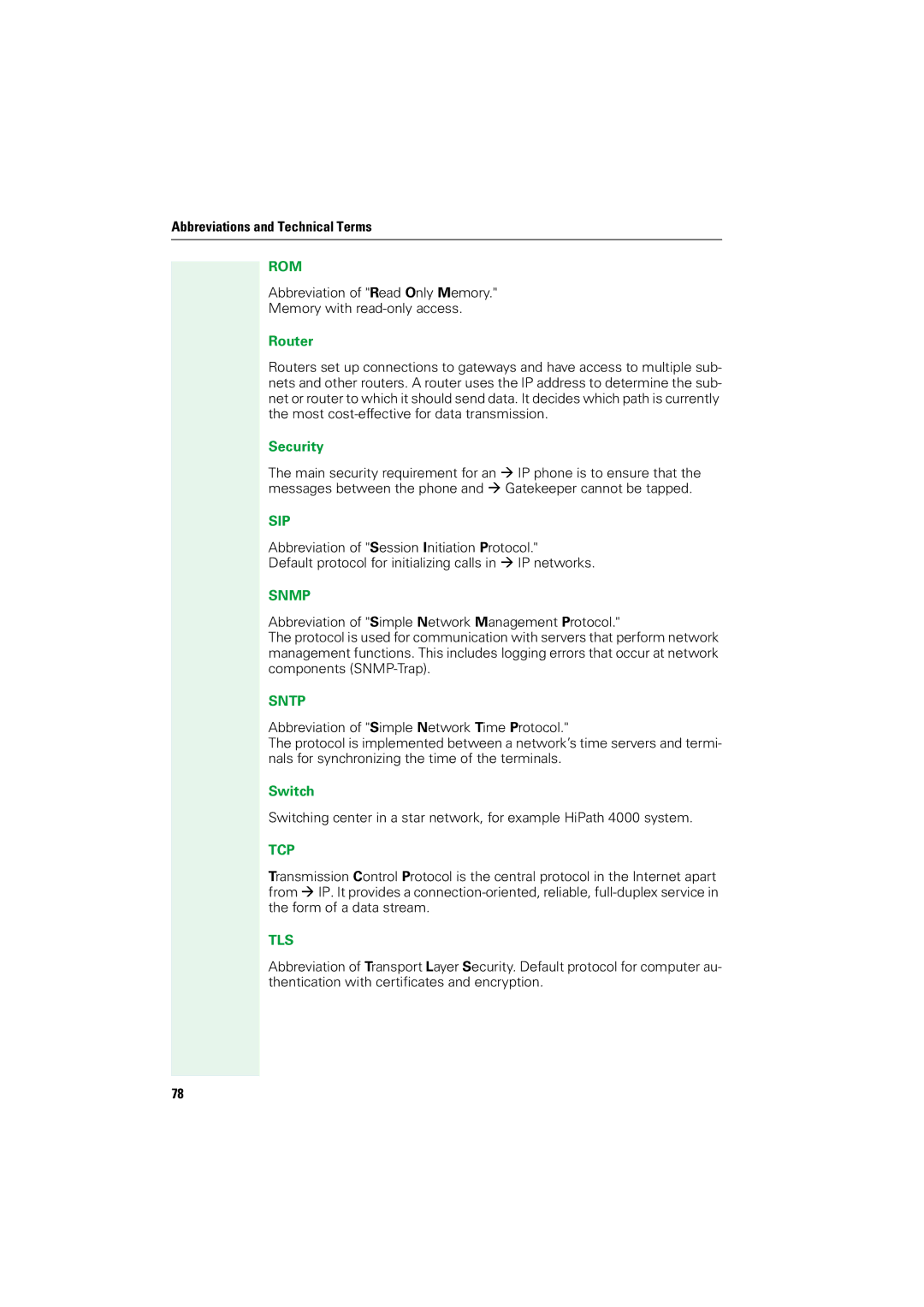
Abbreviations and Technical Terms
ROM
Abbreviation of "Read Only Memory."
Memory with
Router
Routers set up connections to gateways and have access to multiple sub- nets and other routers. A router uses the IP address to determine the sub- net or router to which it should send data. It decides which path is currently the most
Security
The main security requirement for an Æ IP phone is to ensure that the messages between the phone and Æ Gatekeeper cannot be tapped.
SIP
Abbreviation of "Session Initiation Protocol."
Default protocol for initializing calls in Æ IP networks.
SNMP
Abbreviation of "Simple Network Management Protocol."
The protocol is used for communication with servers that perform network management functions. This includes logging errors that occur at network components
SNTP
Abbreviation of "Simple Network Time Protocol."
The protocol is implemented between a network’s time servers and termi- nals for synchronizing the time of the terminals.
Switch
Switching center in a star network, for example HiPath 4000 system.
TCP
Transmission Control Protocol is the central protocol in the Internet apart from Æ IP. It provides a
TLS
Abbreviation of Transport Layer Security. Default protocol for computer au- thentication with certificates and encryption.
78
